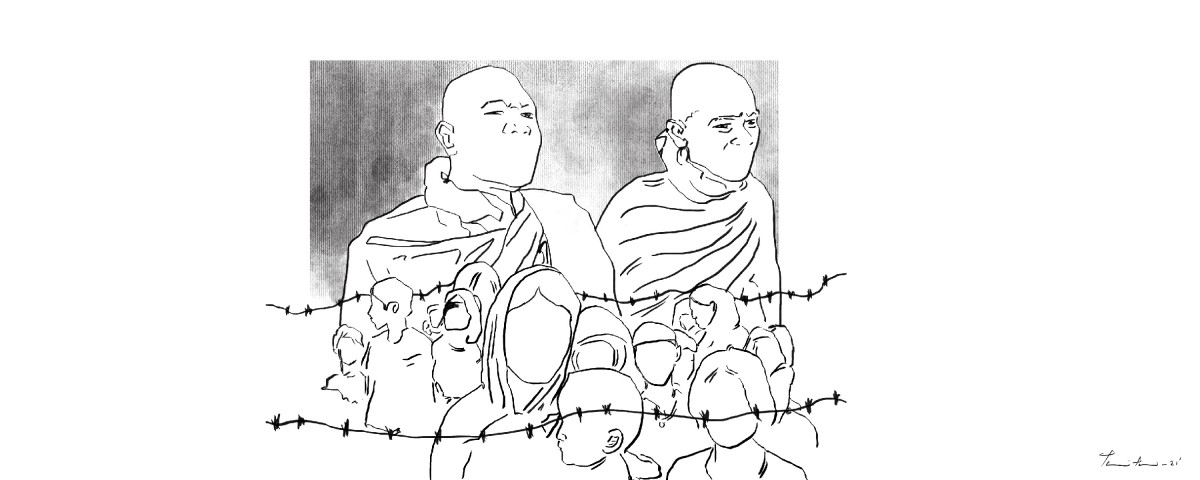In the past week alone, two tragic incidents left Indian people in shock and despair. One is the death of the former Army Chief and the first Chief of Defence of the Indian Armed Forces Bipin Rawat along with 12 other defense personnel, as well as his wife. The other was the the gunning down of 14 innocent civilians by the Indian army under the alleged suspicion of them being militants.
Both of these incidents are disturbing and need the attention of Indian people. But if we look closely, we see a disturbing silence around the Nagaland incident among all the media platforms – be it mainstream, alternative or social media. Major politicians, film actors, celebrated cricketers, social media influencers expressed their condolences over the former incident but silent on the latter.
A culture of keeping silent on issues of oppression
The state of Nagaland is a tribal dominated state. It has been under the draconian Armed Forces Special Powers Act (AFSPA) since 1958. Under this act, any army personnel, even a non-commissioned officer, can fire upon civilians on the basis of mere suspicion. The enforcement of this act is very controversial since among the five states in which it is in force, three are tribal and the other two are minority-dominated states.
The act was challenged in the Supreme Court of India by the Naga People’s Movement of Human Rights in 1980. But the Supreme Court upheld it as a temporary measure. Yet, after four decades, it is still operative. In 2016, it came under the spotlight again due to several alleged extra-judicial killings in Manipur. An enquiry was ordered against 1,528 alleged extra-judicial killings done under the impunity granted by AFSPA. Despite this, there is a culture of silence maintained by the Indian media and other democratic institutions towards the oppressive nature of the law and the irrational impunity granted to the armed forces in those states.
This culture of silence can enable any institution to behave with toxicity. The Indian army has been enjoying impunity when it comes to several allegations of caste discrimination and gender-specific violences. For example, in December 2014, a court directed the Indian army to pay a sum of Rs 10 lakh as ex-gratia amount to the family of Thangjam Manorama, who was raped and killed by the paramilitary unit of Indian army.
Such a case also happened in 1991 in a village named Kunan Poshpora in Kashmir. A similar incident took place in Vakapalli in Andhra Pradesh in 2007 where 11 Adivasi women from the Kondh tribe were gangraped at gunpoint by Greyhounds personnel, a police special force against the anti-naxalites. The victims are yet to get justice.
In January 2018, a video posted by one Indian army soldier named Kamlesh Yadav went viral on social media where he alleged that he was facing caste discrimination in the army. He said that he made several complaints but got no redressal.
There are many such incidents of torture and discrimination around India.
The manufacturing of consent by the media
After the BJP came to power in 2019 amidst allegations of the government politicising the security forces, media houses started to radically accommodate news favouring defence institutions over mass issues. For example, the media justified disastrous economic measures like demonetisation by comparing common people standing in queue to army personal patrolling in borders. This helped towards the manufacturing consent in favour of government policies – be it economic, political or cultural – a big threat towards the democratic set up of the Indian state if left unchecked.
Even the caste-privileged academia shows little interest in critically engaging with such topics. In the absence of a counter-narrative, the common masses get influenced by the mainstream media narrative and a common consent is developed in favour of masochist behaviour by the army as well as police.
For example, we can look at another recent incident from Assam where on November 29, a student leader was lynched by a mob. In response, a demand for instant justice was put out on social media. Led by a famous journalist from the state, he stated in a viral video why the person who was leading the mob needed to be shot at sight. Later on, when the same person had been apprehended, he was killed. The police claims that he got hit by a police van after trying to run from another police van. This death was celebrated by bursting crackers and shouting slogans in favour of the police in Assam.
It is worth noting that in most of these extra-judicial killings, the victims belong to a marginalised identity – be it caste, class or gender.
This sense of impunity may lead to the total collapse of rule of law in a country. Hence, the time to end this culture of silence maintained by the mainstream media, political parties and other democratic institutions when it comes to such issues is now. Otherwise, our greatest achievement as the largest democracy of the world will remain under threat.
Ashok Danavath is a Tribal graduate scholar from TISS, Hyderabad. He has worked as a Policy, Development and Welfare professional at Libtech India. He is currently at the International Institute of Social Studies (ISS), Erasmus University Rotterdam, Netherlands. His ongoing research pertains to the marginalization of SC-ST communities in India.
Taniya Laskar is secretary General of Barak Human Rights Protection Committee. A lawyer by profession she is also a rights practitioner and Activist Working on NRC citizenship issues of marginalised people in northeast India.
Featured image credit: Pariplab Chakraborty

